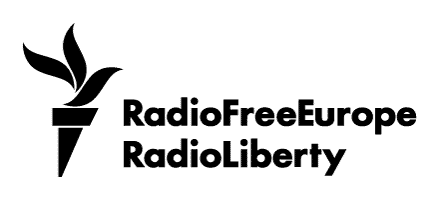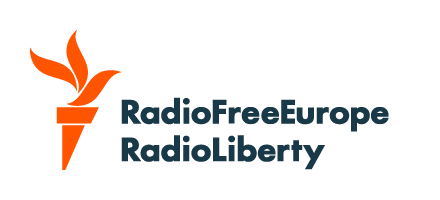
Welcome to Wider Europe, RFE/RL's newsletter focusing on the key issues concerning the European Union, NATO, and other institutions and their relationships with the Western Balkans and Europe's Eastern neighborhoods.
I'm RFE/RL Europe Editor Rikard Jozwiak, and this week I am drilling down on two issues: an upcoming EU-Western Balkans summit and the setting up of a Ukraine claims commission.
Briefing #1: An EU-Western Balkans Summit In The Shadow Of Ukraine
What You Need To Know: European Union leaders are gathering in Brussels on December 18-19 with a single task: securing funding for Ukraine for the next two years.
With more countries, including Bulgaria, Malta and Italy, aligning with Belgium in questioning the feasibility of a reparations loan for Kyiv as the preferred method, most diplomatic efforts this week will go to attempt to solve this issue.
But a day before the meeting, on December 17, the EU capital hosts another summit that is completely overshadowed by events pertaining to Ukraine: The leaders of six Western Balkans hopefuls (Albania, Bosnia-Herzegovina, Kosovo, Montenegro, North Macedonia, and Serbia) are meeting with their EU counterparts in Brussels.
The annual EU-Western Balkans summit has become something of a box-ticking exercise in recent years with few, if any deliverables, and this meeting is no exception.
The draft summit communique, seen by RFE/RL, that EU leaders will endorse states that "the future of the Western Balkans is in our Union. Enlargement is a realistic possibility, which should be seized."
Deep Background: In reality, most of the six countries are stalled on their path to EU membership, and only Albania and Montenegro have made progress toward joining the bloc. But the run-up to the meeting and the political horse-trading on show gives a perfect example that even this advance is brittle.
Throughout the autumn, the idea was that Montenegro would close accession talks on five policy chapters -- the biggest leap forward for Podgorica as to date it had only managed to conclude negotiations on a total of seven of 33 chapters.
Draft conclusions, seen by RFE/RL, had already been drawn up congratulating the country on the achievement until France stepped in last week. Questioning progress in some areas, Paris pushed for only three chapters to be closed. Montenegrin President Jakov Milatovic held a phone call with his French counterpart, Emmanuel Macron, over the weekend and managed to convince him agree on all five.
Drilling Down:
- The issue France had was in fact not with Montenegro at all but rather that Serbia, a close French political ally, won't open any accession chapters. Belgrade has been stuck ever since the full-scale invasion of Ukraine 2022 with several other EU member states unhappy that the country won't align with EU sanctions on Russia and insufficient progress in the area of rule of law.
- As opening and closing of chapters requires consensus among the 27 EU member states, France was instead resorting to a common Brussels tactic of linking one candidate country's progress (or lack thereof) to that of another.
- But while France relented when it came to Montenegro, it got its way on Kosovo. The EU imposed measures on Pristina, including the freezing of hundreds of millions of euros, in 2023 after Kosovo recognized the results of controversial elections in the Serb-dominated north despite warnings from Brussels.
- While there is broad agreement that Kosovo has taken sufficient steps to de-escalate and the measures gradually should be lifted, France has led the push to slow the process.
- Backed by Hungary, Italy, Spain, and Slovakia, Paris has made sure nothing is lifted before Kosovo's parliamentary election on December 28. These countries were also instrumental in Serbia avoiding EU sanctions two years ago after Serb militants with alleged Belgrade backing attacked Kosovar police in the northern village of Banjska, leaving one law enforcement officer dead.
- Outside the enlargement jockeying, there isn't much else for the EU to push for when it comes to the Western Balkans in the upcoming year apart from gradual integration with the EU market in a few fields.
- Albania, Montenegro, North Macedonia, and Serbia this year joined the Single Euro Payments Area, which simplifies and reduces bank transfers in euros. The idea is that the other two could also join soon.
- Similarly, the goal for Brussels in 2026 is to include the entire region in its mobile phone "roam like home" regime that would allow citizens of the six republics to call, message, and use mobile data in the EU using their domestic phone rates.
- This would be one step further from the reduction of roaming charges between the EU and the Western Balkan EU hopefuls that entered into force in 2023. It would follow Moldova and Ukraine, which join the EU's roaming area on January 1.
Briefing #2: What Is Ukraine's New Claims Commission?
What You Need To Know: On December 16, Ukraine moves closer toward receiving compensation for damages caused by Russia since its full-scale invasion in February 2022. Senior politicians, likely including Ukrainian President Volodymyr Zelenskyy and European Commission President Ursula von der Leyen, will go to the Hague to adopt a new convention establishing an International Claims Commission for Ukraine.
This is the second of three steps Kyiv needs to secure compensation down the line. The first step was in 2023 when the Council of Europe set up a Register of Damage for Ukraine, which records compensation claims for damage, loss, or injury caused by Russia's aggression against Ukraine.
This register has so far has received well over 60,000 claims from countries, organizations, and individuals.
The third and final step would be to set up a compensation fund. Such a fund would likely be administered by the Council of Europe or one of its member states and contain money, most likely from frozen Russian assets, to be channeled to Kyiv.
European officials told RFE/RL the register and claims commission will certainly play a part in future Russian reparations in one way or another and will likely be a part of any eventual peace deal.
Deep Background: What will the International Claims Commission for Ukraine actually do? While the register has so far collected and recorded claims and gathered evidence for compensation, the future commission will determine the type and amount of compensation due, if any.
Claims date to the start of the full-scale invasion on February 24, 2022, and apply to the entirety of Ukraine's internationally recognized borders -- including land Russia has held since the 2014 annexation of Crimea and the subsequent outbreak of fighting in the Ukrainian Donetsk and Luhansk regions.
It also includes Ukraine's airspace, inland waterways, and territorial seas, as well as aircrafts and vessels under the jurisdiction of Kyiv.
Once up and running, three panels will assess all the claims, and member countries will contribute experts in international law, dispute resolution, insurance, and damage assessment.
Drilling Down:
- The convention on setting up the claims commission will enter into force once the 25 participating states have ratified it. This should happen relatively quickly given the register was backed by 41 countries, including all EU member states bar Hungary. Diplomats have told RFE/RL that a similar number of states are expected to ratify.
- The Netherlands has been the driving force on compensation for Ukraine, playing a key role on drafting the convention and getting it approved by various Council of Europe bodies in the last year.
- While both the register and commission are set up within the institutional framework of the Council of Europe, the initiative is open to countries around the world. In fact, a resolution dealing with future reparations to Ukraine passed by the United Nations General Assembly back in 2022 was what got the ball rolling.
- Curiously, Russia is also free to join both as a fully fledged member and as an "observer" even though European officials that RFE/RL has spoken to see this as highly unlikely. If Moscow were to become a member in the future, it would have to foot the bill for the entire commission, which now is likely to be carried out by in-kind contributions from participating states.
Looking Ahead
The European Commission's annual report on visa liberalization is due on December 19. The report describes how well third countries that enjoy visa liberalization with the bloc fulfill various benchmarks -- normally regarding preventing irregular migration and overstays in the EU but also human rights abuses and issues recommendations.
This year its chapter on Georgia will be particularly interesting as it is likely to be highly critical of the democratic backsliding in the country.
At the end of the year, the EU's new visa liberalization suspension mechanism enters into force, and it will come as no surprise if aspects of Tbilisi's visa-free regime are targeted in early 2026.
That's all for this week!
Feel free to reach out to me on any of these issues on X @RikardJozwiak, or on e-mail at jozwiakr@rferl.org.
Until next time,
Rikard Jozwiak
If you enjoyed this briefing and don't want to miss the next edition subscribe here.






